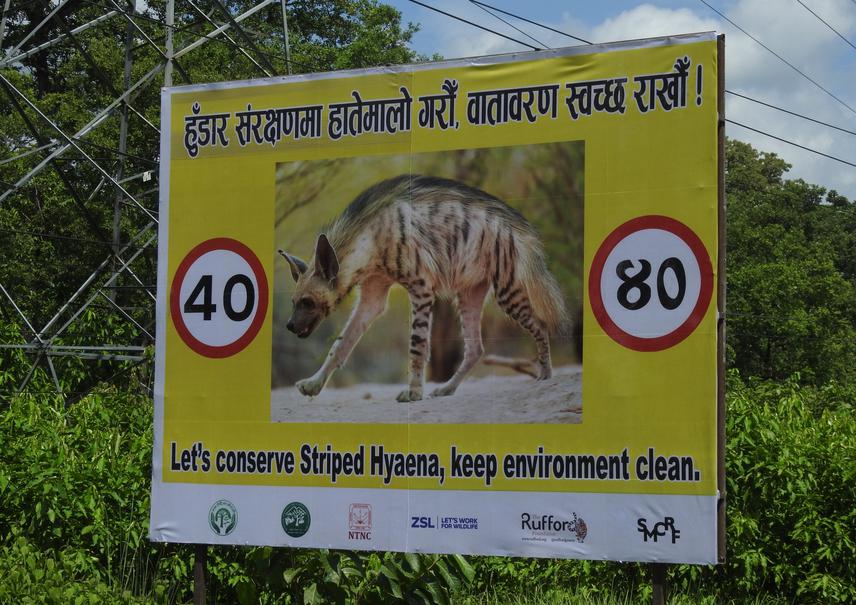Dipendra Adhikari
Aims:
• Verify the occurrence of population by assessing the abundance of the species.
• Interpersonal communication with highway drivers for awareness and speed control to avoid road kills.
• Public awareness through posters, pamphlets and school outreach program.
• Developing a network of citizen scientist for regular monitoring and continued community advocacy for hyaena conservation.

Reflective Highway Hoarding Board.
The near threatened (Jnawali et.al 2011) and nationally protected striped hyaena (Hyaena hyaena) in Nepal is declining drastically due to retaliation, persecution, habitat loss, road kills and depleting prey-population. They are distributed in the southern lowlands of Nepal including Protected Areas (PAs) and beyond Protected Areas (Majupuria & Majupuria 2006). However, little is known about its past and present occurrence (Jnawali et al, 2011). Hence, studies and actions are urgent for long term survival and conservation of this species. This project conducts extensive field work to identify major hotspots, occurrence and abundance, assess habitat status and threats, carry out conservation initiatives and outreach activities at local level, strengthen citizen scientists and halt road kills through awareness programs.
The study area is located in Bara district of central terai, Nepal. It includes the area of Nijhgadh, Singaul and periphery of Dhansar Bridge of Bara district. For the survey, we will include local citizen scientist after proper orientation by the investigator and technical field team. We will perform the semi-structured interviews with households to know their perception regarding the hyaena, conflicts, retaliatory killing and other threats. Monitoring will be carried out by deploying camera trapping method and sign survey. Camera traps deployment will be based on the movement pattern obtained from the sign survey. After monitoring, outreach materials like posters will be produced and awareness campaign to school children, local communities, security personnel, vehicle staffs and other concerned stakeholders will be conducted. In addition to that, hyaena information display board that delivers detailed information of striped hyaena with information including to mitigate road kill will be made and placed on the highway between Nijhgadh-Chandranigahapur. With all these combined activities, we hope to understand the abundance of striped hyaenas, develop local citizen scientists, disseminate awareness to vehicle drivers, form monitoring and conservation group and eventually mitigate the existing threats to striped hyaenas.